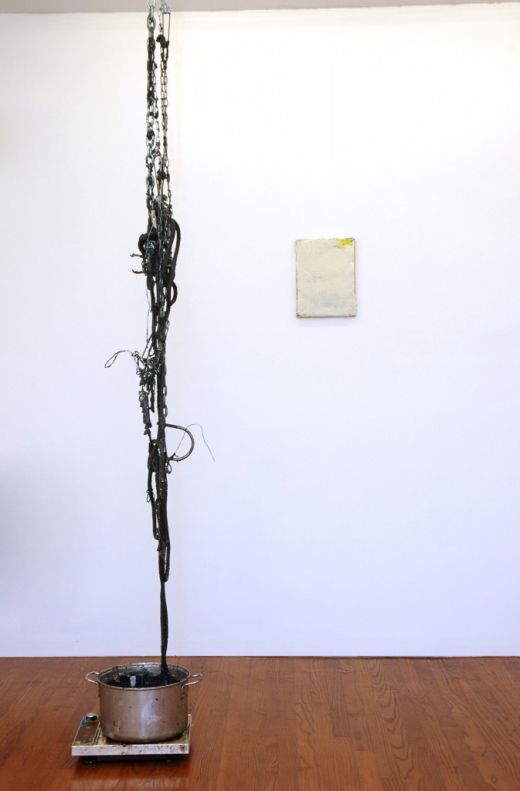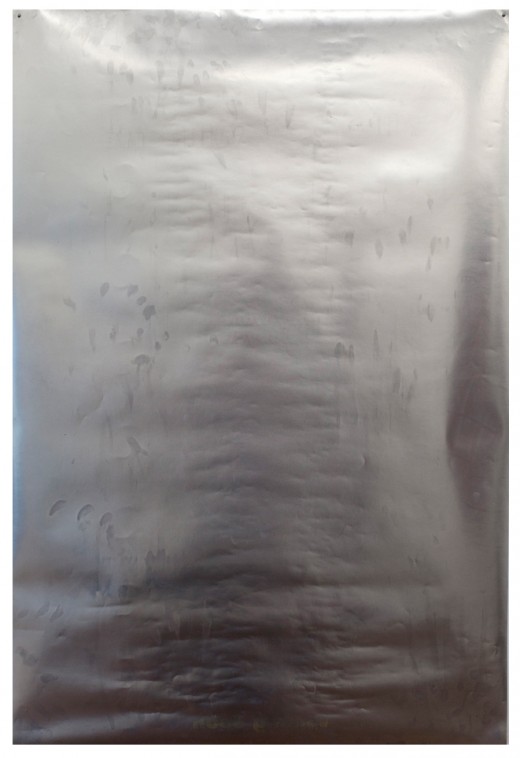Feelings
Amanda Sanfilippo

foreground: J. Patrick Walsh 3, "Hot Pot Charmer," 2012. background: "Face Plate 1-8 minus 7," series, 2012. Photo courtesy of Michael Jon Gallery.

Bobbi Woods, “Warm For Your Form,” 2012. Enamel on poster. Photo courtesy of Michael Jon Gallery.
The image, culled from a post on Facebook (Gomez often uses other online platforms, such as Tumblr), calls attention to the flattening of the artist’s studio to the surface of a computer screen. In this light, Gomez’s piece could be understood as part of a distinct visual language sourced exclusively from the Internet and digital media, termed the New Aesthetic by London-based writer James Brindle.
Like Gomez’s work, which highlights a “re-materialization” of the art object from the digital realm, the offerings of J. Patrick Walsh 3, in particular “Hot Pot Charmer,” are a literal emergence. Like a cobra from a basket, a tangle of chains and ropes encased in gray-blue wax and hooked to the ceiling extend up from a metal pot. The pot sits upon a hot plate filled with a surplus of the opaque material. At the end of the exhibition (as at the beginning), the plate is turned on, the wax (mostly from melted candles, including wicks) heated, and the metal collapsed to lie latent beneath a mute surface. The work is designed for compact mobility and a no-fuss potential to re-do, thwarting any chance of an original.
In this space of post-appropriation and layered decontextualization, the works are sensitive to the tension between authentic and generic gestures, yet do not make a case for either. Their ambivalence stems from a casual forfeit of reality in the wake of aesthetic and cultural simulacra made mundane.










